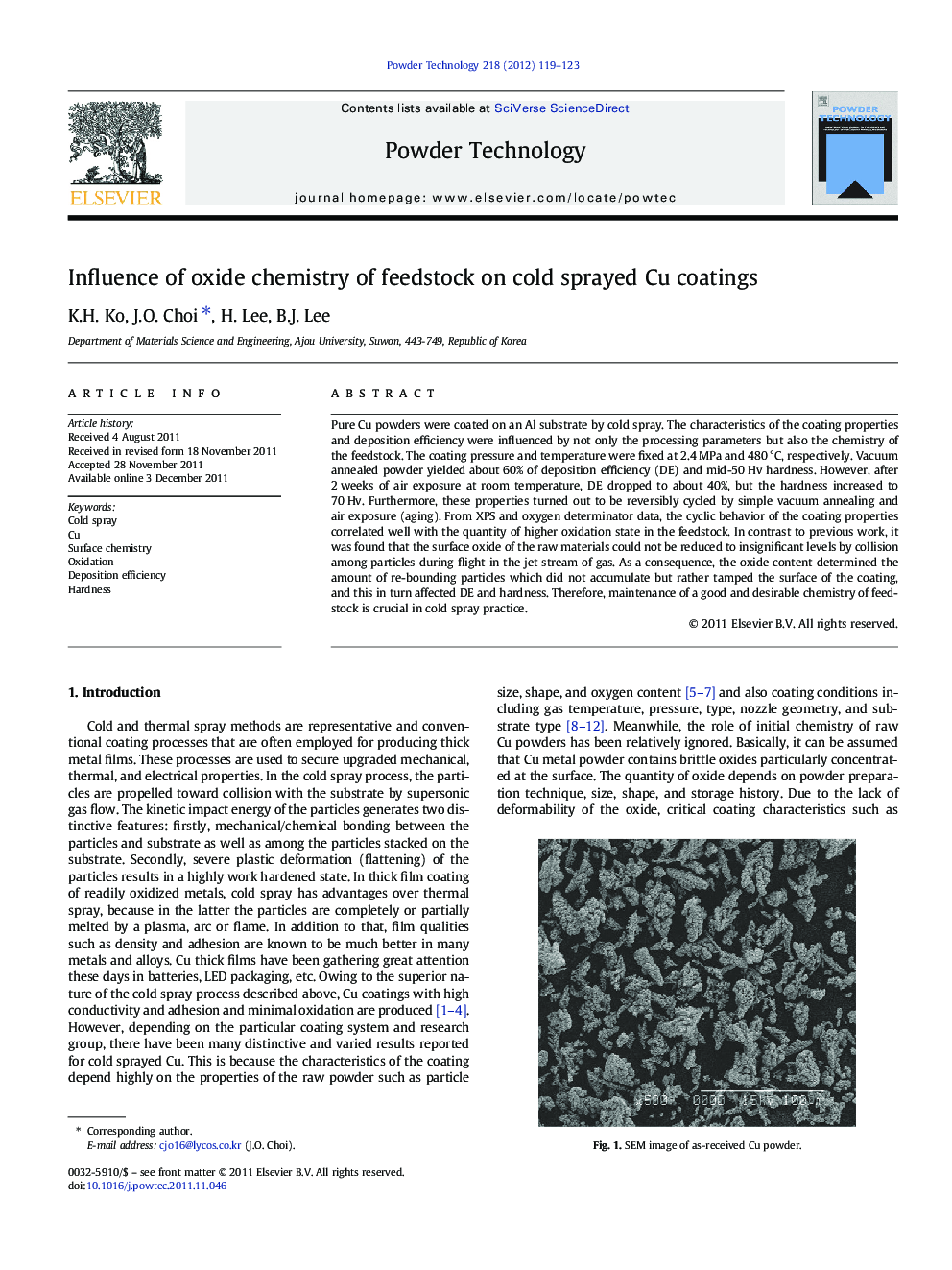| Article ID | Journal | Published Year | Pages | File Type |
|---|---|---|---|---|
| 237358 | Powder Technology | 2012 | 5 Pages |
Pure Cu powders were coated on an Al substrate by cold spray. The characteristics of the coating properties and deposition efficiency were influenced by not only the processing parameters but also the chemistry of the feedstock. The coating pressure and temperature were fixed at 2.4 MPa and 480 °C, respectively. Vacuum annealed powder yielded about 60% of deposition efficiency (DE) and mid-50 Hv hardness. However, after 2 weeks of air exposure at room temperature, DE dropped to about 40%, but the hardness increased to 70 Hv. Furthermore, these properties turned out to be reversibly cycled by simple vacuum annealing and air exposure (aging). From XPS and oxygen determinator data, the cyclic behavior of the coating properties correlated well with the quantity of higher oxidation state in the feedstock. In contrast to previous work, it was found that the surface oxide of the raw materials could not be reduced to insignificant levels by collision among particles during flight in the jet stream of gas. As a consequence, the oxide content determined the amount of re-bounding particles which did not accumulate but rather tamped the surface of the coating, and this in turn affected DE and hardness. Therefore, maintenance of a good and desirable chemistry of feedstock is crucial in cold spray practice.
Graphical abstractThe vacuum annealed Cu powders kept in the vacuum desiccators of 10− 3 Torr for 2 weeks. In this case, it was found that the coating efficiency was only slightly decreased comparing with those of air aged Cu powders.Figure optionsDownload full-size imageDownload as PowerPoint slideHighlights► Pure Cu powders were coated on Al substrate by cold spray. ► The coating properties were influenced by the chemistry of feedstock. ► The deposition efficiency could be determined by the amount of re-bound particles. ► Maintaining of good and desirable chemistry of feedstock is crucial in cold spray.
